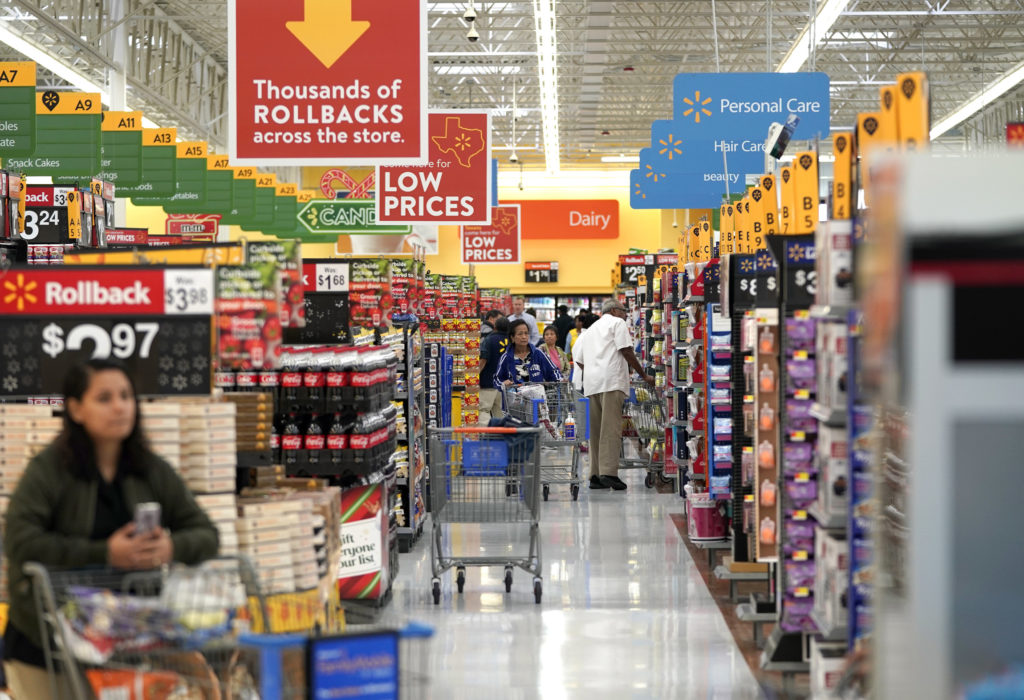If You Think Only E-Retailers Use Your Data, Think Again

As the U.S. and the European Union seem ready to move full steam ahead into antitrust proceedings, it is clear that they need a better understanding of how data is used and what actually constitutes the market they purport to have the expertise to regulate. Limiting Amazon’s ability to sell its own branded products or use of data, won’t apply only to Amazon. It will apply to all retailers, and it won’t make their shoppers any better off.
CVS Health provides over 2,500 over-the-counter health care products that offer savings to shoppers such as the option to purchase Ibuprofen over Advil or choices in the Beauty 360 product line. Target has 45 private labels including Market Pantry, Opalhouse and Archer Farms; Walmart’s stable of brands includes Equate, Sam’s Choice and No Boundaries; and, Lowe’s offers successful private labels including Kobalt, Harbor Breeze, and Allen Roth. All of these companies use data and retail analytics to determine which products to produce and sell.
People like having the choice between more expensive name brands or designer labels and in-house generic products. Limiting choices might benefit a select few favored competitors and businesses, but it won’t help the average American.
The EU filed a lawsuit against Amazon’s use of data to sell products on its platform. Somehow the EU is unable to recognize that there is functionally no difference between e-commerce and brick & mortar commerce. It doesn’t matter what store front is used to purchase a product; it is all part of the same retail market. For the seller to collect data, an individual does not need to purchase from a website. Physical stores using retail analytics collect and compile similar data – including first party, transactional, third party, and internal data – which is leveraged to compete and meet customer demand both in-store and online.
Lowe’s uses all of these types of data to determine which products to carry and when. Analysis of customer shopping patterns and weather data provided insight into how weather influenced customer behavior. Lowe’s then modified inventories and supply chains to meet certain demands, such as moving more plywood to hurricane zones.
CVS uses various algorithms that leverage the frequency of shopping, the number and category of items in a shopper’s basket, the volume of and price per item, and hundreds of other variables to determine the products that will be offered. This happens whether a customer has a rewards card tracking their specific behavior or not. Meanwhile, they constantly test multiple variables to find the most predictive data points for behavior and which products sell the best. Based on behavior patterns, CVS then determines if a test group, versus a control group, purchased more items or were upsold on a higher margin CVS brand item.
This hidden gem is the best emerging growth play we have seen in decades. With management buyout experience reaching into the billions and institutional funding flowing in, this stock pick is perfectly timed. Investors click here for full details.
Sponsored by Growth Equity Report
This data determines which generics to sell, which ones sell best, and how to sell more of them. Even with the knowledge of how CVS uses data, shoppers don’t want to see low cost generics disappear from CVS’s shelves, nor would that benefit other businesses that sell their products via CVS without having to have their own store front.
Major retailers and grocers all use data to determine which products to carry when, which generics to sell, and how to sell more or particular items. Aldi partners with Nielsen to gather customer data, while Kroger partners with Microsoft. Walmart was the third largest spender on information technology in the United States in 2018, and Amazon provides data to their sellers. All of this data provided to these companies is used for growth, to determine trends and shifting needs of a customer base.
It is not the case that simply because Amazon is primarily online (though it has dramatically increased its physical presence over the past few years, particularly with the addition of Whole Foods) that it has “near perfect market intelligence” or any better market intelligence than Walmart, Target, Kroger, CVS or any other retailer. Any retailer that wants to employ market analytics can do so.
In fact, brick and mortar stores, especially smaller operations, are able to compete with Amazon and Walmart by using data they already have to create a customer experience that can’t be replicated by online shopping or in big box stores.
Small and large operations alike can: set up Wi-Fi for customers and thereby collect information, including email addresses and dates visited; create personalized “in-store only” offers to email addresses gathered to increase transactions; and, use location data for targeting prospects who visited competitors or who frequent a store’s neighborhood.
Whether we like it or not, analytics are an integral part of the retail market, and on balance shoppers are better off – more options, lower prices, and timely availability. The analytics used by the big guys are also available to small retailers, which means choking off access to data at any level will harm everyone. That’s not the sort of direction our elected representatives should be taking, especially as we recover from and remain in the midst of a global pandemic.
Written by Katie McAuliffe
